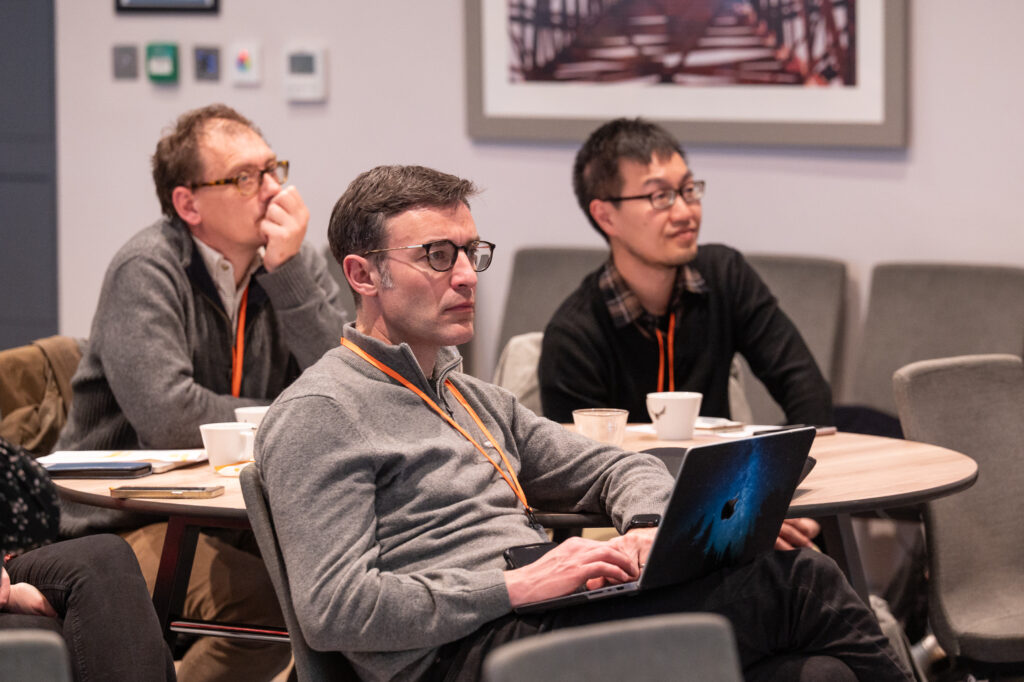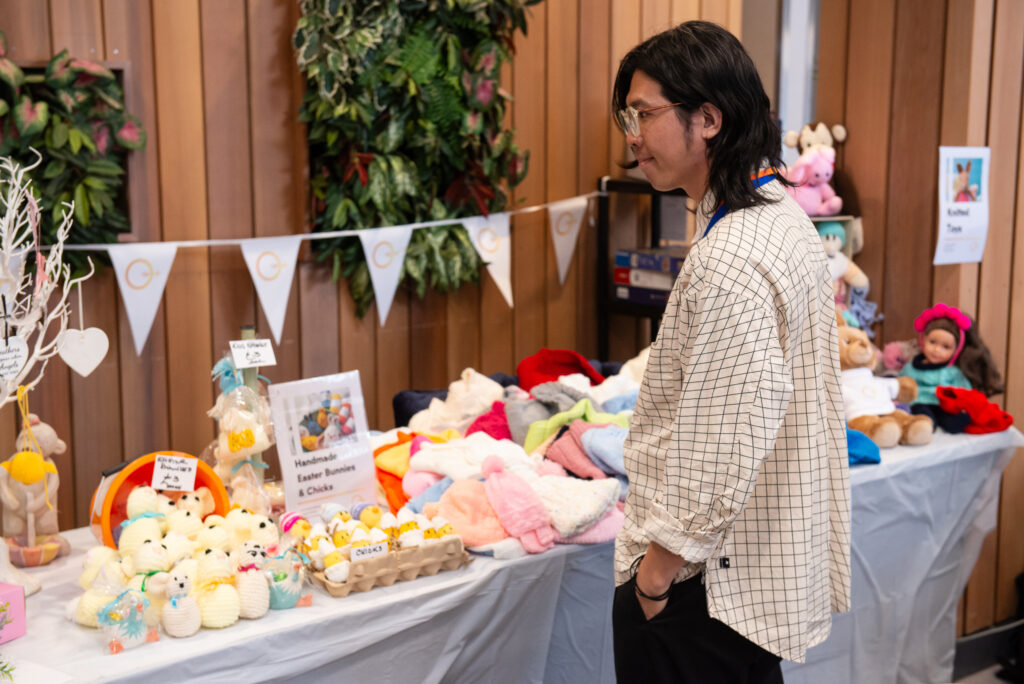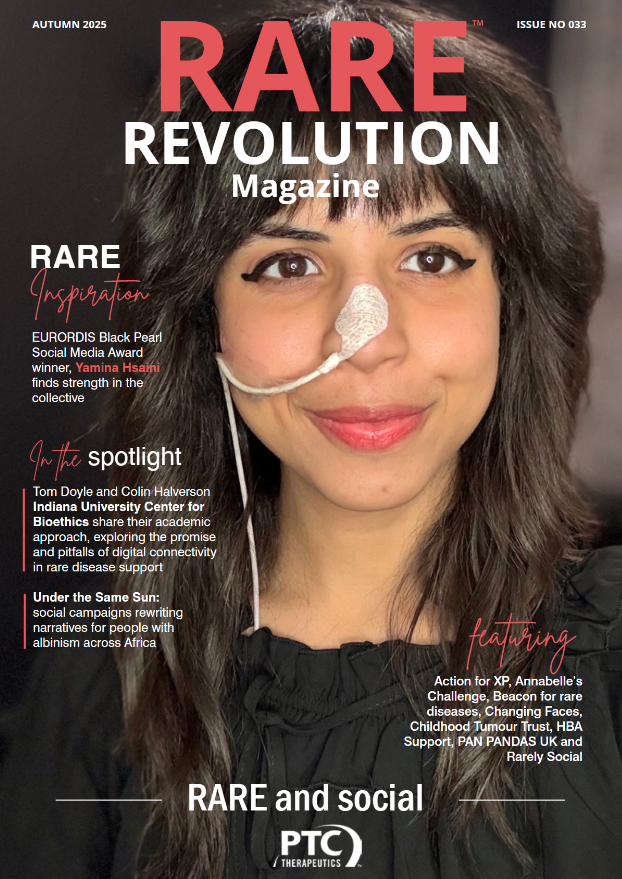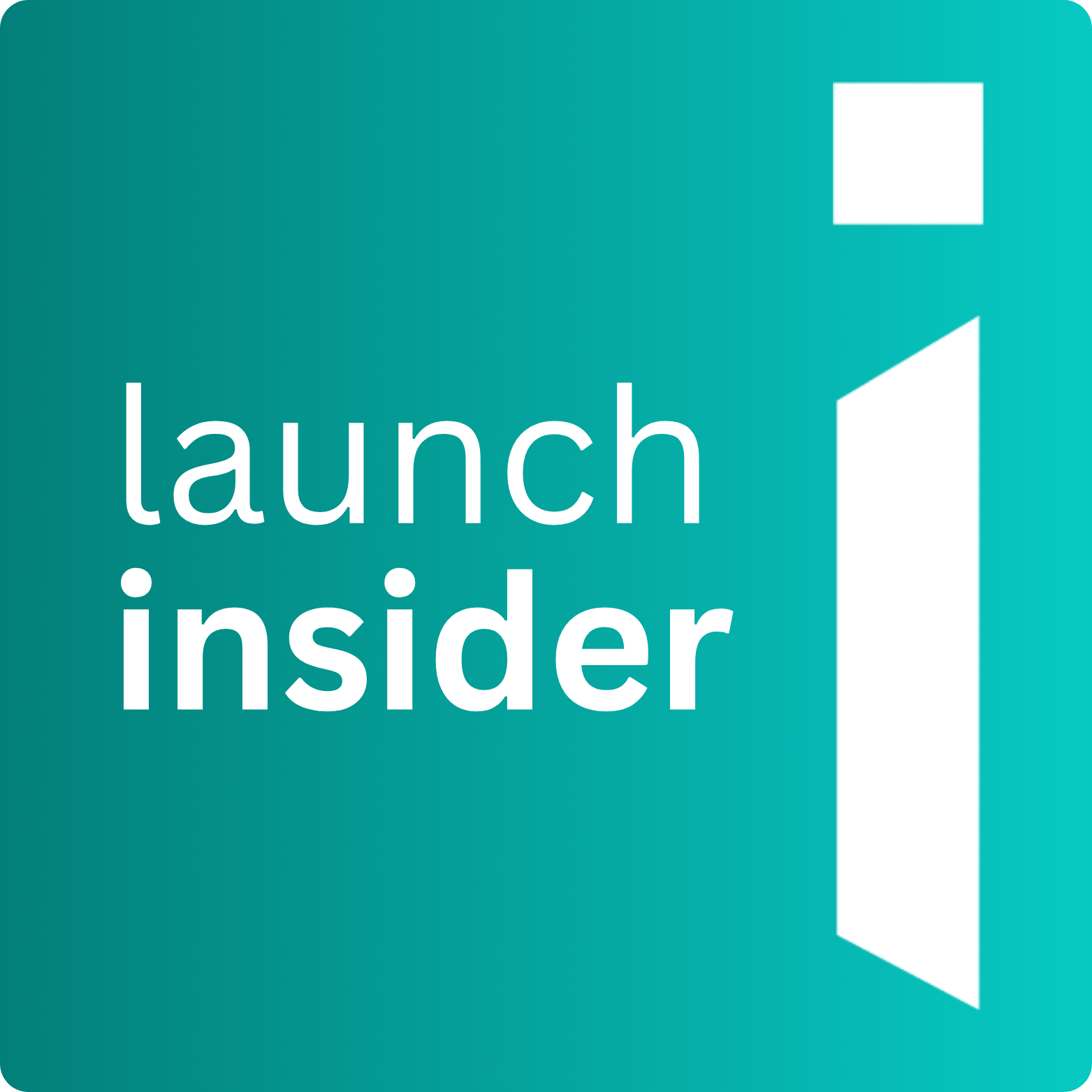Highlighting breakthroughs and collaboration: The NPUK Annual Family Conference & Interactive Workshop 2025

The first day of the Annual Family Conference and Interactive Workshop on Niemann-Pick diseases, held on April 4th, 2025, at Wyboston Lakes, Bedfordshire, England, was a day filled with profound discussions, groundbreaking research presentations, and heartfelt community engagement. The event served as a vital platform for families, clinicians, researchers, and industry representatives to converge, share insights, and collaboratively advance the understanding and treatment of Niemann-Pick diseases. The overall tone was one of hope, resilience, and a strong commitment to improving the lives of individuals affected by these rare disorders. The day’s proceedings were characterised by an enthusiastic and forward-looking spirit, emphasising collaboration, transparency, and scientific integrity.
The conference was opened by Joella Melville, co-chair of NPUK, and Dr. William Evans, trustee and chair emeritus of NPUK, who warmly welcomed everyone to their 13th interactive workshop and family conference. Their introduction set an optimistic tone, highlighting the potential for the conference to evolve into a European-based symposium on lysosomal diseases, reflecting the growing international collaboration in the field. NPUK reiterated its commitment to empowering the community with accurate information, fostering transparency, and providing a platform for open debate.





Interactive workshop 1: research updates
The first workshop focused on cutting-edge research into Niemann-Pick type C (NPC) disease. This session explored cellular mechanisms, potential therapeutic targets, and innovative research tools. Key areas included:
- Cellular mechanisms: Discussions covered lysosomal calcium homeostasis, mitochondrial-lysosomal interactions, inflammatory pathways, and cholesterol trafficking.
- Technological innovations: Presentations highlighted the development of new fluorescent probes, advanced data collection through an international registry, and sophisticated imaging techniques.
- Major findings: Researchers shared insights into the complex interactions between cellular organelles, identified potential therapeutic targets, and revealed intricate mechanisms of disease progression.
Research highlights:
- confirmed PMCA2’s role in lysosomal calcium transport
- demonstrated how mitochondrial-lysosomal contact sites impact cellular function
- showed how calcium signaling affects inflammatory responses
- developed new tools for studying lysosomal disorders
Collaborative approach:
- emphasis on international research networks
- patient registries supporting global research efforts
- multidisciplinary research teams working together
Sean Bolton, MSc, chief operating officer, International Niemann-Pick Disease Registry (INPDR) gave a presentation which detailed research opportunities using the INDPR, including longitudinal studies, characteristics research, clinical research areas, comparative analysis, and translational research. Researchers can submit data access request forms to explore these opportunities.
Maria Fernandez-Suarez, Ph.D., University of Oxford focused on the role of the NPC1 and PMCA2 complex in lysosomal calcium homeostasis, revealing a direct interaction between these proteins and the lysosomal localisation of PMCA2. This research suggests that PMCA2 and its complex with NPC1 could be a potential therapeutic target for NPC.
Helen Waller-Evans, lysosomal portfolio lead, Medicines Discovery Unit, Cardiff University discussed the development of alternative fluorescent probes for lysosomes and autophagy factors, particularly the AQ2 molecule and its analogs. These new probes offer unique pH-specific excitation properties and allow for better visualisation of lysosomal and autophagy1 processes.
Dr. Iain Hargreaves from Liverpool John Moores University gave a presentation highlighting secondary mitochondrial dysfunction in lysosomal storage disorders, particularly emphasising mitochondrial respiratory chain impairment. He discussed mechanisms of dysfunction, specific findings in Niemann-Pick disease, and planned future investigations.
UCL Institute of Ophthalmology Ph.D. students, Jack Stanley and Szilvia Kiraly’s presentation focused on mitochondrial-lysosomal contact sites (MLCs) in NPC and their implications for mitophagy2. Their research showed increased MLCs in NPC cells, correlated with lysosomal cholesterol accumulation, and explored how calcium signaling and GSK3 beta regulate MLCs.
University of Oxford student Puravi Panda’s presentation explored inflammation and lysosomal calcium homeostasis in NPC, revealing impaired phosphorylation and degradation of IκBα and delayed nuclear translocation of NF-κB. This research suggests a link between lysosomal calcium mobilisation and innate immunity.
Interactive workshop 2: research updates
Chaired by Stefan A. Kold, M.D., Ph.D., this session continued the focus on research updates and therapeutic strategies.
Prof. Fran Platt, FMedSci FRS, Department of Pharmacology, University of Oxford’s presentation focused on acetyl leucine, a recently FDA-approved drug. The research showed that the drug rapidly takes up leucine into tissues, rebalances glucose metabolism in NPC and Sandhoff disease models, reduces lysosomal volume and neuroinflammation, and extends lifespan in animal models.
Kevin T. Vaughan, Ph.D. University of Notre Dame, discussed a novel therapeutic strategy targeting lysosomal tubulation and sting protein activation. The research suggested that NPC disease involves two primary problems: restoration of lysosomal tubulation and regulation of the sting protein response.
Andres Klein Ph.D. Instituto de Ciencias e Innovación en Medicina (ICIM), Chile, presented on genomic modifiers, identifying genomic variations that can modify disease progression and drug responses in NPC. The research used linkage analysis, family studies, and model organisms to identify modifier genes and validated findings across multiple systems.
Reuben Bush, DPhil student’s presentation focused on computational tools for assessing NPC phenotypic heterogeneity. The research addressed the significant phenotypic heterogeneity in NPC disease and developed computational approaches to understand mutation impacts, including 3D structural clustering of NPC1 mutations.
Sean Kassen Ph.D. Director of Ara Parseghian Medical Research Fund highlighted how they are inspiring hope. They have funded over 200 grants and supported key achievements like gene isolation for NPC1 and NPC2. Current initiatives include a new bio repository, a biomarker program, and a small molecule stabiliser program.
Yurim Goughs introduced her artwork, “The Path We Take; the Path We Are Taking; the Path We Will Take; the Path Beyond,” inspired by NPC research. The artwork aimed to capture the emotional journey of dealing with difficult challenges and overcoming adversity.
Interactive workshop 3: understanding and treating Niemann-Pick diseases
Chaired by Dr. William Evans, this workshop focused on clinical experiences and treatment approaches.
Caroline Hastings M.D. Children’s Hospital & Research Center, Oakland, presented a detailed history of repurposing hydroxypropyl beta cyclodextrin (HPBCD) as a potential treatment for NPC. She centered on the journey of twin girls and highlighted the critical role of patient advocacy and scientific collaboration.
Prof. Orna Staretz-Chacham from Soroka Medical Centre, Israel covered the Israeli experience with NPC1, focusing on epidemiology, clinical observations, and treatment experiences. Key insights included the importance of early diagnosis and potential protective effects of prematurity.
Professor Holm Uhlig, University of Oxford and Hollie Carter, an adult living with NPC, presented a dual perspective on NPC and Inflammatory Bowel Disease (IBD). Hollie shared her personal journey with crohn’s disease and NPC, while Professor Uhlig discussed the connection between monogenic conditions like NPC and IBD, emphasising the need for better communication between specialists.
Dr. T A Dabir M.D.,DCG, MRCP, Belfast City Hospital, presented on Niemann-Pick type B (Also known as ASMD B) and enzyme replacement therapy (ERT), sharing patient cases and treatment outcomes. The presentation highlighted the transformative potential of ERT and the critical role of patient-driven healthcare navigation.
Interactive workshop 4: preclinical updates
Chaired by Dr. Robin Lachmann Ph.D. FRCP, this workshop focused on preclinical research advancements.
Hsintsung Chen, CEO of DaRev, discussed the challenges of data utilisation in research and introduced “Mice Arc,” a knowledge base for animal data. The platform aims to collect and archive animal data, creating a space for scientists to share research data.
Aham A. Rahim, Ph.D. Wellcome chair & head of Department of Pharmacology, UCL School of Pharmacy. University College London presented on gene therapy for NPC, focusing on delivering a functional NPC1 gene using a viral vector. The research showed dose-dependent survival improvement, increased neuron survival, reduced neuroinflammation, and decreased lysosomal pathology in mouse models.
Andrew Roddam, chief business development officer, EveryOne Medicines, and Prof Paul Gissen, clinical professor in paediatric metabolic diseases, GOSH, discussed individualised medicines for rare genetic diseases, focusing on antisense oligonucleotide (ASO) therapies. They aim to develop personalised treatments for ultra-rare genetic diseases and reduce treatment time to 6-9 months.
Interactive workshop 5: advancing care and understanding in Niemann-Pick diseases
Dr. Chris Knifton, associate professor in teaching and learning (neurocognitive and neurodevelopmental care), De Montfort University, discussed the challenges of including childhood dementia in educational curricula, emphasising the need for a comprehensive curriculum for healthcare professionals and highlighting the psychological impact of dementia diagnosis.
Prof. Tarekegn Hiwot, consultant in inherited metabolic disorders, University of Birmingham, presented an update on the NPC clinical practice guidelines, emphasising the importance of updating guidelines to reflect the latest medical advancements. The presentation highlighted the significant impact of previous guidelines and the collaborative approach to the current update.
Justin Hopkin M.D. chair emeritus, NNPDF; INPDA and INPDR Research Committee presented a study exploring the global experience of NPC patients and caregivers, aiming to document the impact of NPC on daily life, understand quality of life, and investigate clinical management and patient attitudes towards research.
Jackson Pountney Ph.D. Aston University, Birmingham UK, presented his PhD research on quality of life for NPC patients, focusing on developing a patient-reported version of the NPC CSS and creating a disease-specific quality of life questionnaire.
Sandra Cowie, president, INDPA, concluded the session with updates on an ASMD-specific patient-reported outcome measure and a journal article on treatment impacts. She emphasised the importance of patient perspectives and the need for comprehensive data collection.





Call to action
The final session of the day by Toni Mathieson, CEO of NPUK, highlighted NPUK’s deep disappointment by the National Institute for Health and Care Excellence (NICE)’s decision not to recommend olipudase alfa for routine NHS use in treating ASMD. Despite acknowledging the treatment’s clinical effectiveness, NICE deemed its cost too high under the current framework for highly specialised medicines.
This decision denies patients access to a therapy that could significantly improve their quality of life and slow disease progression, leaving them with only complex and costly supportive care. She emphasised the devastating impact of this decision, stating that the cost of a drug should not outweigh the value of a life.
She called for collaboration among NICE, the NHS, policymakers, and pharmaceutical companies to find a sustainable solution that ensures patient access. She highlighted the need for flexibility in assessing rare disease therapies and urged all parties to engage in meaningful discussions. A recent study showed life-changing effects of the treatment, and the decision has highlighted inequalities in patient access in the UK. She assured families that NPUK remains committed to advocating for equitable access and change.
Overview
Day one of the Annual Family Conference & Interactive Workshop on Niemann-Pick diseases paints a vivid picture of a community deeply invested in advancing the understanding and treatment of these complex disorders. Reading through the comprehensive summaries of each session, one is struck by the sheer dedication and collaborative spirit that permeated the event. This was not just a conference; it was, as the opening statement rightly notes, “a gathering of hearts, minds, and shared experiences.”





Throughout the day, several key themes emerged:
- Collaboration: The importance of international networks, patient registries, and multidisciplinary teams was repeatedly highlighted.
- Patient advocacy: The vital role of patients and families in driving research and treatment development was evident in many presentations.
- Transparency: NPUK’s commitment to providing accurate information and fostering open debate was a consistent thread.
- Hope: Despite the challenges posed by Niemann-Pick diseases, there was a strong sense of optimism and a belief in the potential for future breakthroughs.
The financial support from various organisations, reflects the broader commitment to advancing research and care for Niemann-Pick diseases. This collaborative effort, bringing together patients, families, clinicians, researchers, and industry representatives, is essential for making meaningful progress.
The conference was made possible by the support of NPUK, which relies on donations and grants, and financial support from Azafaros, Cyclo Therapeutics, IntraBio, Sanofi, and Zevra Therapeutics, who provided unrestricted educational grants. The financial support from various organisations, reflects the broader commitment to advancing research and care for Niemann-Pick diseases. This collaborative effort, bringing together patients, families, clinicians, researchers, and industry representatives, is essential for making meaningful progress and showcases the dedication and collaborative spirit of the Niemann-Pick community, driving progress towards better understanding and treatment of these complex diseases.
References
[1] https://pmc.ncbi.nlm.nih.gov/articles/PMC2832191/
[2] https://www.sciencedirect.com/topics/neuroscience/mitophagy




